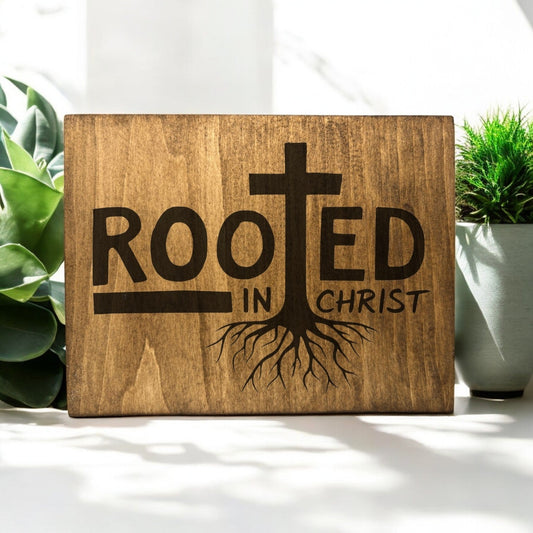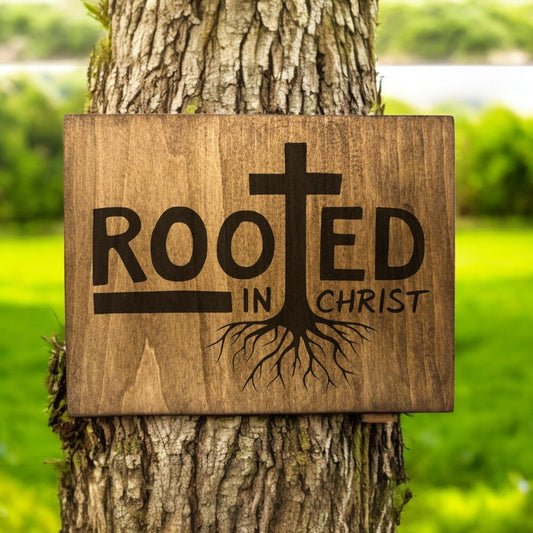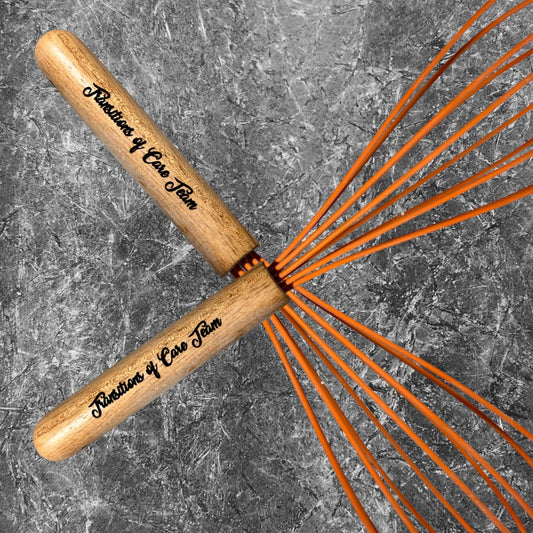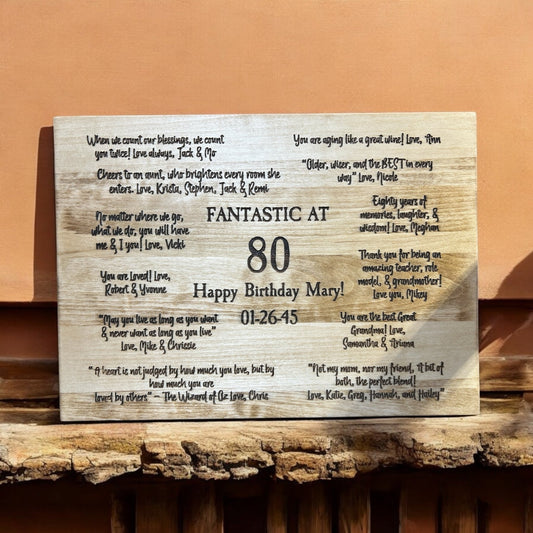In a world filled with mass-produced items, there is something truly captivating about a handmade piece. Delving into the realm of woodcraft, handmade wooden signs stand out as a true marvel of artistry and craftsmanship. Each sign tells a story, bearing the mark of the skilled hands that shaped it.
From rustic cabin signs to personalized family name signs, these handcrafted works of art bring warmth, character, and a touch of nostalgia to any space. They invite us to step away from the digital realm and reconnect with the raw beauty of nature and tradition.
Every grain and knot in the wood is carefully considered as artisans pour their heart and soul into creating these unique pieces. Each stroke of the brush, each etched line, is infused with passion and dedication. The end result is a symbol of authenticity, a testament to the heritage of woodworking.
Whether used to adorn homes, businesses, or public spaces, handmade wood signs have the power to captivate and inspire. They add a timeless charm and create a connection between the past and the present. So, next time you come across a beautifully handcrafted wooden sign, take a moment to appreciate the artistry behind it and the story it tells.

The Art Of Handmade Wood Signs
Handmade wood signs are a true testament to the enduring allure of craftsmanship and the human touch. In a world increasingly dominated by mass-produced goods, these unique creations stand out as a celebration of individuality and the timeless beauty of natural materials. The art of handmade wood signs lies in the ability of skilled artisans to transform a humble piece of wood into a captivating work of art that evokes emotions and tells a story.
At the heart of this art form is a deep appreciation for the inherent qualities of wood. Each plank, with its distinct grain patterns, knots, and imperfections, is viewed as a canvas waiting to be transformed. Artisans meticulously select the right wood species, considering factors such as color, texture, and durability, to ensure that their creations are not only visually stunning but also built to withstand the test of time.
The true magic, however, happens in the hands of the skilled craftspeople who pour their passion, creativity, and technical expertise into every step of the process. From the initial sketching and design phase to the intricate carving, painting, and finishing touches, each handmade wood sign is a unique expression of the artist's vision and personal touch. This commitment to quality and attention to detail is what sets these works apart, making them cherished possessions that can be passed down through generations.
History and significance of handmade wood signs
The tradition of handmade wood signs dates back centuries, rooted in the rich heritage of woodworking and the human desire to leave a lasting mark on the world. In ancient times, wooden signs were used to convey important information, mark boundaries, and identify businesses or establishments. These simple yet functional objects gradually evolved, becoming more than just utilitarian tools, but canvases for artistic expression and storytelling.
As communities grew and trade flourished, the demand for handcrafted wooden signs increased. Skilled artisans, often working in small workshops or family-owned businesses, began to incorporate their own unique styles and techniques into their creations. The use of wood, a natural and renewable material, allowed for a level of customization and personalization that was difficult to achieve with mass-produced alternatives.
Today, the significance of handmade wood signs extends far beyond their practical applications. These objects have become symbols of heritage, tradition, and a deep appreciation for the craftsmanship of the past. They serve as a reminder of the importance of preserving the artisanal skills and the human connection that is often lost in the modern, fast-paced world. By adorning homes, businesses, and public spaces, handmade wood signs create a sense of warmth, character, and authenticity that resonates with people on a emotional level.
Materials and tools used in creating handmade wood signs
The creation of handmade wood signs is a multifaceted process that requires a deep understanding of the materials and tools involved. Artisans carefully select the appropriate wood species, considering factors such as grain patterns, color, and durability, to ensure that their creations are not only visually stunning but also built to withstand the test of time.
Common wood species used in handmade wood sign making include pine, cedar, oak, maple, and reclaimed barn wood. Each type of wood offers unique characteristics that can be leveraged to achieve different aesthetic effects. For example, the warm, rustic tones of cedar are often used to evoke a cozy, cabin-like atmosphere, while the rich, prominent grain of oak lends itself well to more formal, elegant designs.
In addition to the wood, artisans utilize a variety of specialized tools to bring their visions to life. Hand-operated power tools, such as jigsaws, routers, and sanders, allow for precise cutting, shaping, and finishing of the wood. Traditional hand tools, including chisels, gouges, and carving knives, are also essential for intricate detailing and carving work. Paintbrushes, stencils, and wood-burning tools are used to add color, patterns, and text to the signs, further enhancing their visual appeal.
The skillful use of these materials and tools, combined with the artisan's creative vision and technical expertise, is what sets handmade wood signs apart from their mass-produced counterparts. Each tool and material is carefully selected and employed to create a unique and authentic piece that reflects the maker's personal touch and artistic expression.
Techniques and craftsmanship in making handmade wood signs
The creation of handmade wood signs is a true testament to the skill and craftsmanship of the artisans who dedicate themselves to this art form. From the initial design phase to the final touches, each step in the process requires a meticulous attention to detail and a deep understanding of the medium.
One of the foundational techniques in handmade wood sign making is the careful selection and preparation of the wood. Artisans meticulously inspect each plank, identifying the unique grain patterns, knots, and imperfections that will contribute to the character and individuality of the final piece. They then use a variety of power tools and hand tools to cut, shape, and sand the wood, ensuring a smooth and even surface.
The next critical step is the design and layout of the sign. Skilled artisans often begin with sketches and digital renderings, experimenting with different fonts, graphics, and compositions to achieve the desired aesthetic. They then transfer the design onto the wood using techniques such as stenciling, hand-painting, or wood-burning, each of which requires a steady hand and a keen eye for detail.
The true artistry, however, lies in the intricate carving and etching work that transforms the wood into a captivating work of art. Using specialized tools like chisels, gouges, and wood-burning pens, artisans carefully carve out intricate patterns, text, and three-dimensional elements, infusing each sign with a unique personality and depth.
The final stage of the process involves the application of paint, stains, and sealants, which not only enhance the visual appeal of the sign but also protect the wood from the elements. Artisans often experiment with a variety of techniques, such as distressing, glazing, and hand-lettering, to create a one-of-a-kind finish that reflects their personal style and vision.
Throughout this entire process, the artisan's dedication to quality, attention to detail, and deep understanding of the medium are evident in every aspect of the handmade wood sign. The end result is a truly unique and captivating piece that not only serves a functional purpose but also stands as a testament to the enduring power of human craftsmanship.
How handmade wood signs tell a story
Handmade wood signs are more than just decorative objects; they are vessels that carry stories, memories, and personal connections. Each sign, imbued with the unique touch of the artisan, becomes a tangible representation of the narratives they seek to convey.
At the heart of this storytelling lies the inherent character of the wood itself. Every grain pattern, knot, and imperfection in the material serves as a subtle yet powerful symbol, inviting the viewer to delve deeper and uncover the hidden meanings behind the design. Whether it's the rustic charm of a reclaimed barn wood sign or the elegant simplicity of a maple plaque, the wood itself becomes a canvas for the artisan's creative expression.
The addition of text, graphics, and imagery further enhances the storytelling potential of handmade wood signs. Artisans carefully select fonts, layouts, and design elements that resonate with the intended message or theme, creating a cohesive and meaningful composition. A family name sign, for example, might feature intricate carved lettering and a subtle motif that reflects the family's heritage or values, while a business sign could incorporate the company's logo and a tagline that captures its essence.
Beyond the visual elements, the handcrafted nature of these signs imbues them with a sense of authenticity and personal connection. The imperfections and unique variations that arise during the making process are not flaws, but rather, they are the hallmarks of the artisan's touch, serving as a gentle reminder of the human effort and passion poured into each creation. This personal touch allows the viewer to forge a deeper emotional bond with the sign, as they can imagine the artist's hands shaping the wood and bringing the story to life.
Whether adorning a cozy cabin, a thriving business, or a public space, handmade wood signs have the power to captivate and inspire. They are not mere decorations, but rather, they are tangible expressions of the human experience, inviting the viewer to pause, reflect, and connect with the rich tapestry of stories that they hold.
Popular themes and designs in handmade wood signs
Handmade wood signs have the ability to capture a wide range of themes and designs, catering to diverse preferences and personal styles. From rustic and farmhouse-inspired creations to modern and minimalist designs, the versatility of this art form allows artisans to explore a vast array of creative possibilities.
One of the most enduring and popular themes in handmade wood signs is the rustic and farmhouse aesthetic. These signs often feature weathered, distressed wood, complemented by earthy tones, natural elements, and vintage-inspired typography. They evoke a sense of nostalgia and a connection to the natural world, making them a perfect fit for cozy cabins, country homes, and even urban spaces seeking a touch of rural charm.
Another prevalent theme is the personalized and family-oriented design. Artisans create custom signs featuring family names, established dates, and meaningful motifs that celebrate the unique identity and heritage of a household. These signs not only serve as decorative pieces but also as cherished keepsakes that can be passed down through generations, preserving the family's story for years to come.
For businesses and commercial spaces, handmade wood signs offer a unique opportunity to showcase their brand identity and create a warm, inviting atmosphere. Artisans craft signs that incorporate the company's logo, taglines, and other branding elements, seamlessly blending form and function to create a visually striking and memorable impression.
Seasonal and holiday-inspired designs are also a popular choice, with artisans crafting signs that capture the spirit of various celebrations, from Christmas to Halloween. These signs not only add a festive touch to the space but also serve as a way for individuals and businesses to express their creativity and embrace the changing rhythms of the year.
Beyond these well-established themes, the world of handmade wood signs is constantly evolving, with artisans pushing the boundaries of design and incorporating unique motifs, patterns, and techniques. From abstract and minimalist designs to whimsical and nature-inspired creations, the diversity of handmade wood signs reflects the boundless imagination and creative expression of the artisans who bring them to life.
The process of creating a handmade wood sign
The creation of a handmade wood sign is a multifaceted process that requires a deep understanding of the medium, a keen eye for design, and a steadfast dedication to craftsmanship. Each step in this journey is a testament to the artisan's skill and the rich heritage of woodworking.
The first step in the process is the selection of the wood. Artisans carefully choose the appropriate species, considering factors such as grain patterns, color, and durability, to ensure that their creation will not only be visually stunning but also built to withstand the test of time. Once the wood is selected, the artisan begins the process of preparing the surface, using power tools and hand tools to cut, shape, and sand the material to a smooth, even finish.
With the wood ready, the artisan then turns their attention to the design phase. This involves sketching, digital rendering, and experimenting with various layouts, fonts, and graphics to capture the desired aesthetic and convey the intended message. The artisan may also incorporate personal elements, such as family names or meaningful symbols, to infuse the sign with a deeper level of meaning and significance.
The next critical step is the transfer of the design onto the wood. Artisans employ a range of techniques, from stenciling and hand-painting to wood-burning and etching, to bring their vision to life. This phase requires a steady hand, a keen eye for detail, and a deep understanding of the materials and tools involved, as each stroke and line contributes to the overall character of the sign.
Once the design is firmly established on the wood, the artisan moves on to the intricate carving and shaping process. Using specialized tools like chisels, gouges, and wood-burning pens, they carefully carve out the various elements, creating depth, texture, and a three-dimensional effect that adds to the sign's visual appeal. This stage is where the artisan's true mastery of the craft is on full display, as they transform the wood into a captivating work of art.
The final phase of the process involves the application of paint, stains, and sealants, which not only enhance the visual impact of the sign but also protect the wood from the elements. Artisans often experiment with a variety of techniques, such as distressing, glazing, and hand-lettering, to achieve a unique and personalized finish that reflects their individual style and vision.
Throughout this entire journey, the artisan's dedication to quality, attention to detail, and deep understanding of the medium are evident in every aspect of the handmade wood sign. The end result is a truly one-of-a-kind creation that not only serves a functional purpose but also stands as a testament to the enduring power of human craftsmanship.

































